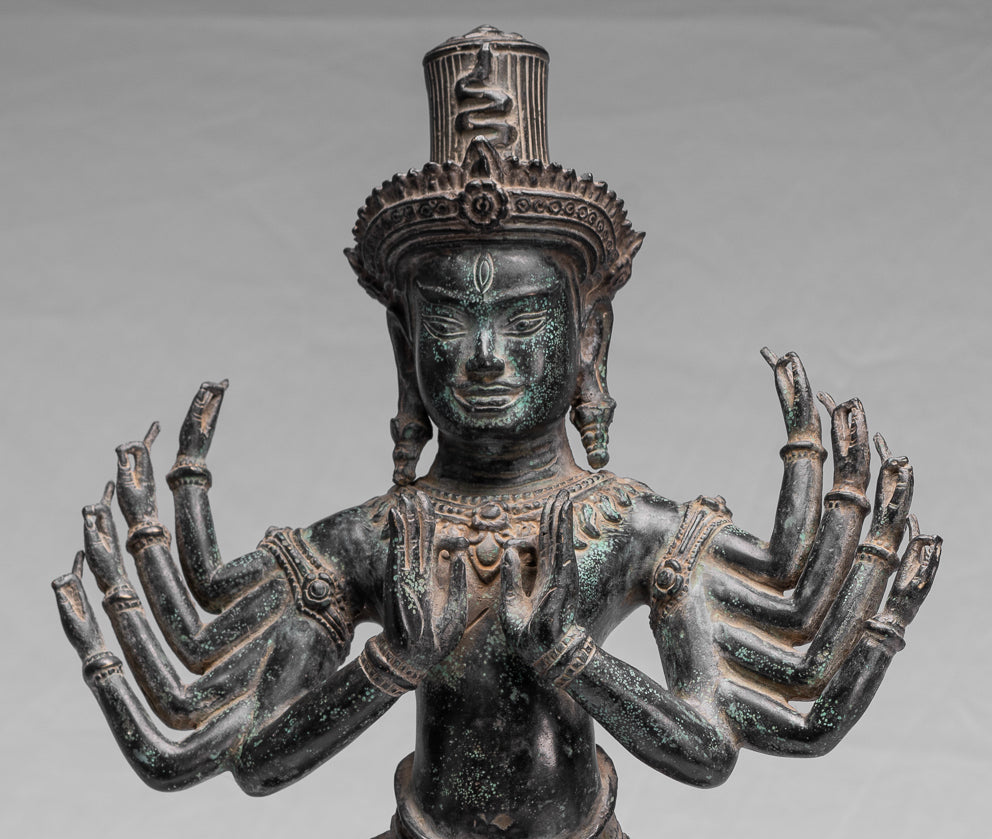
Ardhaparyanka Shiva: The Divine Dance of Balance in Hinduism
Introduction
In the vast pantheon of Hindu deities, Lord Shiva, the auspicious one, takes on myriad forms, each representing different facets of the divine. Among these sacred manifestations, Ardhaparyanka Shiva stands as a unique depiction, embodying the harmony of opposites and the cosmic dance of balance.
In this blog post, we will explore the significance and symbolism of Ardhaparyanka Shiva in Hinduism.
-
Understanding Ardhaparyanka Shiva: Ardhaparyanka Shiva refers to Lord Shiva in a distinctive seated posture where one leg is folded in the lotus position, while the other is extended downward. This half-lotus pose carries profound symbolism, inviting devotees to contemplate the divine dance of equilibrium.
-
Symbolism of the Half-Lotus Posture: The half-lotus posture of Ardhaparyanka Shiva symbolizes the union of opposites—earth and ether, matter and spirit. It embodies the idea of balance and the coexistence of dualities, reflecting the cosmic dance of creation and destruction that Lord Shiva orchestrates.
-
Harmony of Shiva and Shakti: In the Ardha Paryanka pose, Shiva's half-lotus leg represents the divine feminine energy, Shakti. The extended leg symbolizes the dynamic interplay between Shiva and Shakti, illustrating the inseparable nature of these cosmic forces. It speaks to the eternal dance of unity in diversity.
-
Transcendence and Immanence: The lotus, emerging from the mud but untouched by it, represents transcendence over worldly impurities. Ardhaparyanka Shiva, in this pose, encapsulates the divine quality of simultaneously transcending the material realm while being immanently present within it.
-
The Meditative Aspect: The half-lotus pose also denotes a meditative and contemplative state. Ardhaparyanka Shiva invites devotees to engage in introspection, seeking the inner tranquility that comes from meditative practices. It symbolizes the stillness amidst the ceaseless motion of the cosmic dance.
-
Balance in Creation and Destruction: As the Lord of both creation and destruction, Ardhaparyanka Shiva represents the harmonious balance inherent in the cosmic cycles. The pose conveys the idea that creation and destruction are not opposing forces but are interconnected aspects of the eternal dance of existence.
-
Temporal and Eternal: The half-lotus posture serves as a reminder of the temporality of the material world and the eternal nature of the spiritual realm. Ardhaparyanka Shiva encourages devotees to navigate the transient nature of life with a focus on spiritual evolution and transcendence.
-
Yogic Inspiration: The half-lotus pose is a common yogic posture associated with meditation and mindfulness. Ardhaparyanka Shiva, in this form, serves as an inspiration for yogis and seekers, guiding them on the path of self-realization and inner balance.
-
Devotional Practices: Devotees engage in devotional practices and rituals centered around Ardhaparyanka Shiva to seek blessings for inner peace, harmony in relationships, and spiritual elevation. The form serves as a focal point for meditation, inviting practitioners to connect with the divine dance of balance.
Conclusion
Ardhaparyanka Shiva, in the half-lotus posture, emerges as a captivating symbol in Hinduism, representing the dance of balance and the harmonious interplay of cosmic forces. Devotees turn to this divine form for inspiration, seeking to embody the equilibrium that Ardhaparyanka Shiva epitomizes.
In the grand tapestry of Hindu philosophy, Ardhaparyanka Shiva invites seekers to contemplate the dance of dualities, embrace the unity in diversity, and find solace in the eternal balance of the auspicious one.


